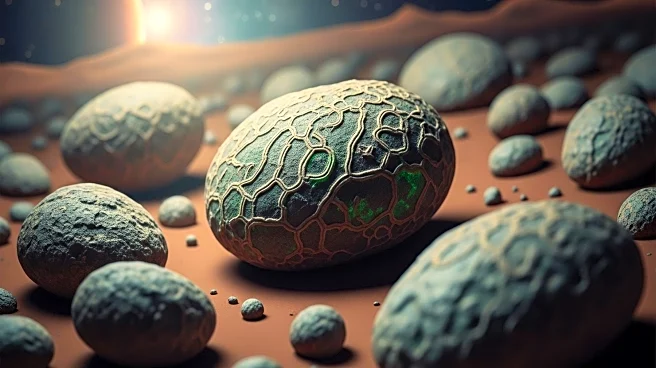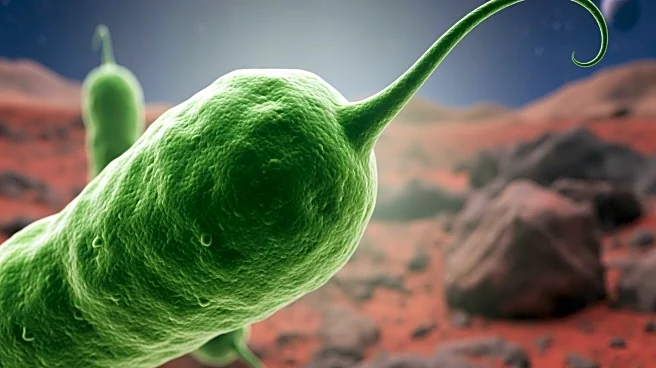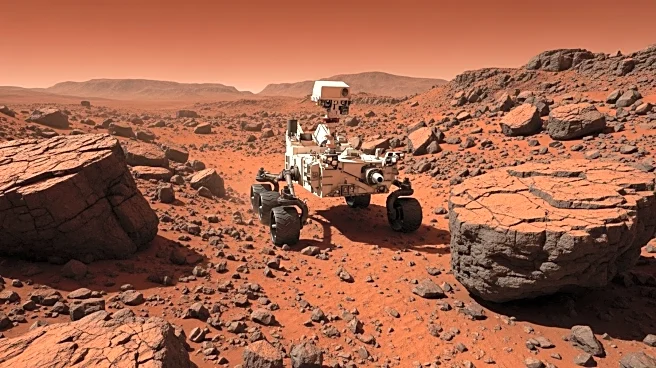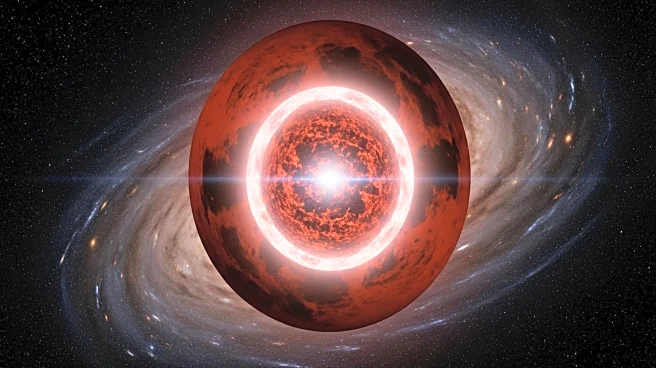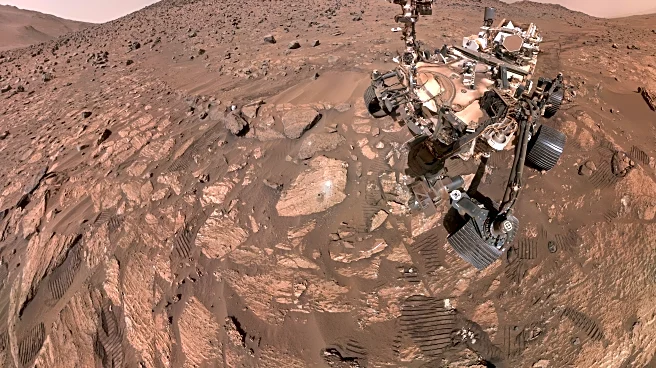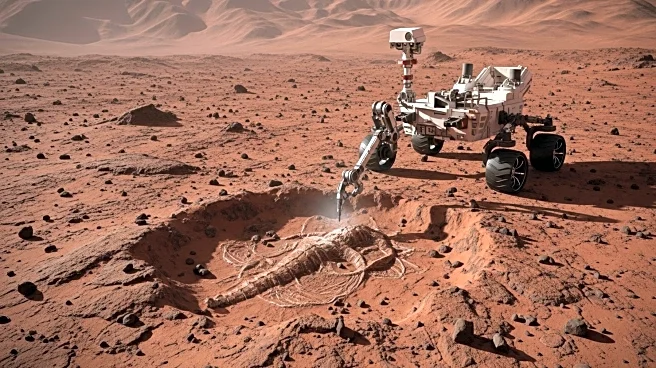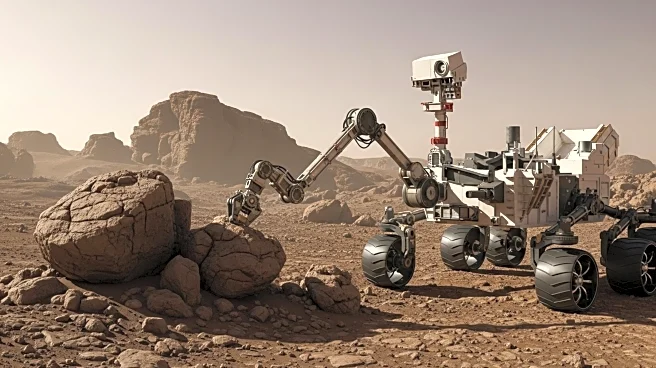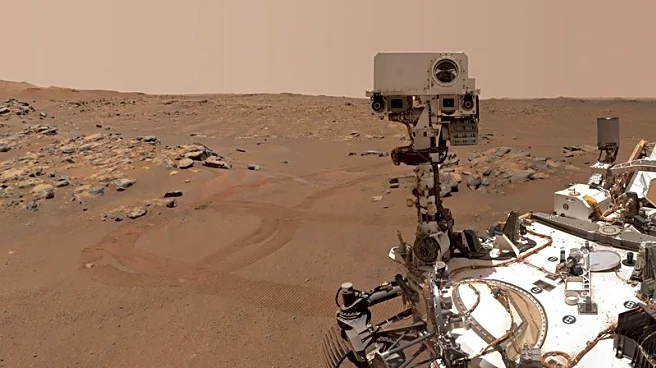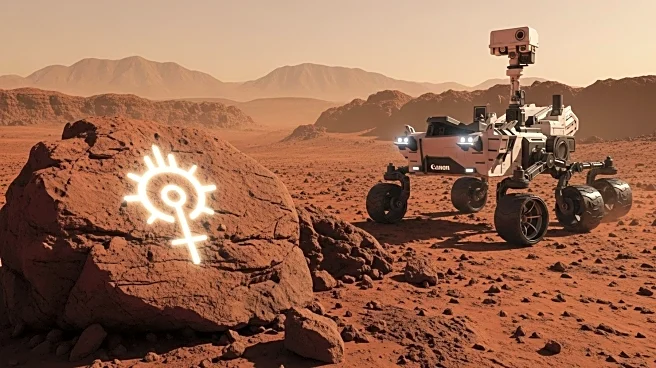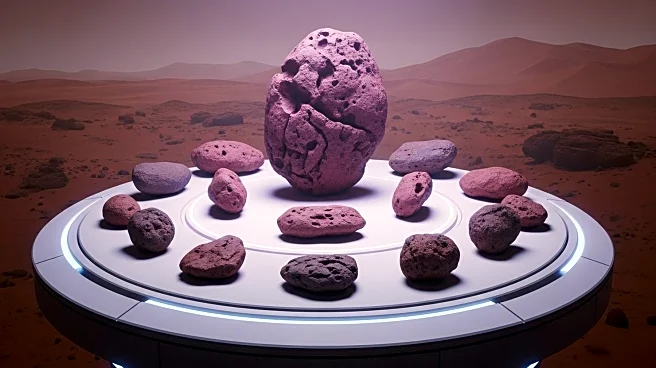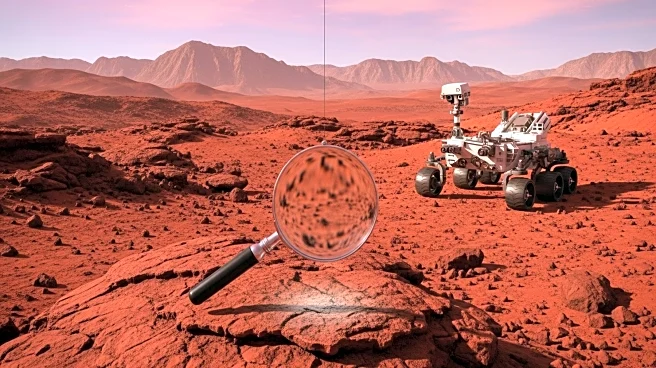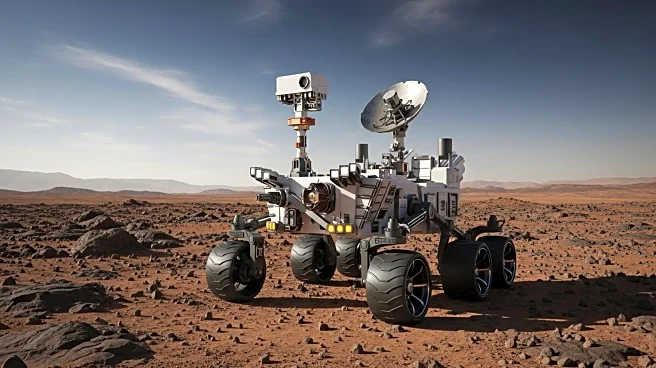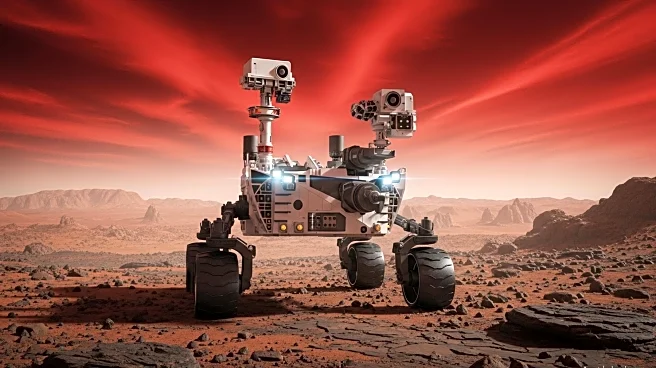What is the story about?
What's Happening?
NASA's Perseverance rover has discovered unusual features in rocks on Mars that may indicate the presence of ancient microbial life. The rover, exploring the Neretva Vallis, an ancient river valley, detected carbon-based compounds and intriguing surface spots and nodules in the Bright Angel formation. These features are often associated with microbial life on Earth. While the origins of these features could be chemical reactions, scientists consider them potential signs of life. The findings, published in Nature, suggest that the textures, chemical and mineral characteristics, and organic signatures in the rocks warrant consideration as potential biosignatures. NASA officials, including Sean Duffy and Dr. Nicky Fox, emphasized the significance of these findings in the quest to determine if life ever existed on Mars.
Why It's Important?
The discovery of potential biosignatures on Mars is a significant step in understanding the planet's history and the possibility of life beyond Earth. If confirmed, these findings could reshape scientific theories about life in the universe and influence future space exploration missions. The research highlights the importance of continued investment in space exploration and scientific research, as it could lead to groundbreaking discoveries. The potential for ancient life on Mars also raises questions about the planet's past environment and its ability to support life, which could have implications for future human exploration and colonization efforts.
What's Next?
Further research and analysis are needed to confirm the biological origins of the features found in the Martian rocks. Scientists plan to conduct laboratory experiments to recreate the features through biological and non-biological processes. The findings may also spur fieldwork at sites with similar reactions. However, the Mars sample return mission, which would allow for detailed analysis on Earth, faces delays and budget cuts. NASA officials are exploring alternative methods to bring samples back to Earth, but the future of the mission remains uncertain.
AI Generated Content
Do you find this article useful?
